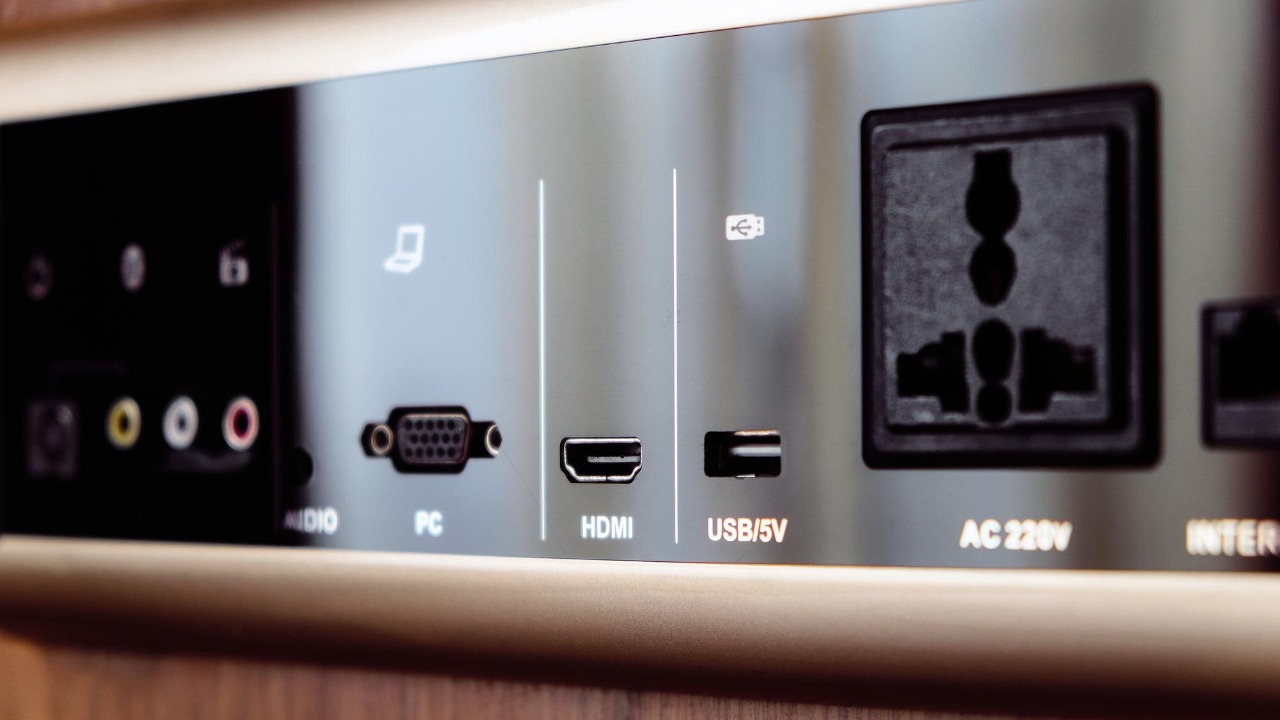
Choosing the right HDMI port on your TV can significantly affect video and audio performance. The HDMI ARC port on smart TVs serves a dedicated purpose for simplifying audio setups with soundbars and receivers. Meanwhile, the HDMI 2.2 standard promises higher bandwidth for future-proofing devices, though some users swear off HDMI entirely.
Basics of HDMI Technology
HDMI, or High-Definition Multimedia Interface, is a critical technology that transmits uncompressed audio and video signals between TVs and devices like Blu-ray players or gaming consoles. The quality of these transmissions depends heavily on the bandwidth requirements of the HDMI connections. High-speed HDMI cables, for instance, support resolutions up to 4K, providing a superior viewing experience as detailed in an overview of high-speed HDMI cables.
However, a common misconception is that all HDMI ports and cables are interchangeable. The reality is that the selection of HDMI ports can differ based on the specific needs of the device connected to the TV.
Types of HDMI Ports on TVs
TVs typically come with standard HDMI ports designed for general video input from sources like streaming devices or cable boxes. However, there are also specialized ports such as HDMI 2.1, which are designed for enhanced gaming features like 120Hz refresh rates. It’s important to note that not all ports on a TV are identical in capability, with some limited to lower speeds as analyzed in a report on why TV HDMI ports matter.
The HDMI ARC Port Explained
The HDMI ARC, or Audio Return Channel, is a function that allows TVs to send audio back to external sound systems without the need for extra cables. This is particularly useful when using ARC with soundbars for simplified home theater setups on smart TVs. However, compatibility requirements need to be considered, such as needing eARC for advanced formats like Dolby Atmos as explained in a guide on the HDMI ARC port’s purpose.
Advancements in HDMI Standards
The HDMI standard has evolved over time, with newer versions like HDMI 2.2 offering increased data rates for 8K support. Key features of the HDMI 2.2 standard include up to 96 Gbps bandwidth and improved security as covered in an article on why HDMI 2.2 matters. These standards significantly affect port choices for high-end TVs to avoid bottlenecks in signal transmission.
When Port Selection Impacts Performance
There are scenarios where using a specific HDMI port can significantly impact performance. For example, in gaming, using a specific HDMI 2.1 port enables features such as variable refresh rate (VRR). In audio-centric setups, mismatching ports to ARC can lead to sync issues or lost surround sound. Real-world testing has shown performance differences across ports as investigated in a report on TV HDMI port variations.
Alternatives to Traditional HDMI Use
While HDMI is a common choice for connecting devices to TVs, there are alternatives. Wireless options like Miracast or AirPlay allow for screen mirroring without cables. Some users even avoid HDMI entirely, preferring modern streaming ecosystems as declared by a user who avoids HDMI. However, the pros and cons of non-HDMI connections need to be considered for specific devices, such as older AV receivers.
Selecting Compatible HDMI Cables and Ports
When it comes to HDMI cables, it’s advisable to opt for high-speed HDMI cables certified for 18 Gbps to match advanced ports. It’s also important to verify TV port labels, like “HDMI ARC” or “HDMI 2.1,” to ensure optimal device pairing. Troubleshooting common issues like no signal can often be resolved by understanding the compatibility and requirements of HDMI ports and cables as informed by a guide to high-speed HDMI cables.
More from MorningOverview